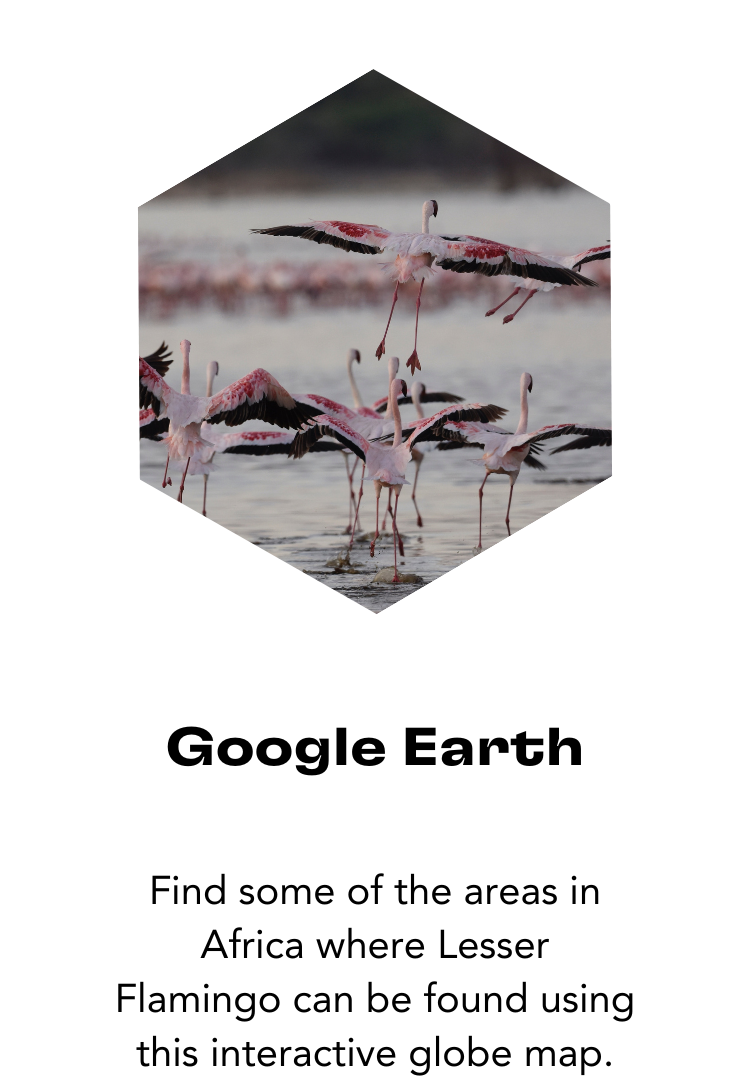
Nesting Islands

Nesting flocks of Lesser Flamingos are remarkable, with masses of pink as far as the eye can see. Among these flocks are also Greater Flamingos, who share many of the habitat preferences of Lesser Flamingos. Although they look similar, Greater Flamingos are larger and have black legs, paler plumage, and darker bills. Greater Flamingo bill anatomy is also slightly different since they filter feed at deeper water depths than Lesser Flamingos given their preference for shrimp and other crustaceans that are found deeper in the water than the cyanobacteria the Lesser Flamingo prefers.
Since Lesser Flamingos rely on shallow waters to feed, changes in water levels can negatively impact their food availability. The soda lakes in the East African Rift Valley have a distinct wet and dry season, and cyanobacteria grow in shallow waters, so decreasing water levels in the lakes aren’t immediately detrimental. However, if water levels decrease further due to human removal or drought, the loss of their primary food source may become an issue.
Experience the sights and sounds of Lesser Flamingos gathered in massive flocks during their nesting.
The Lesser Flamingo eats upside down and has a lower jaw that holds air and allows the jaw to float. To separate food from water and to help it swallow, the Lesser Flamingo uses its fleshy tongue like a pump to push water through its bill up to 20 times a second. Inside their bills, tiny structures called lamellae filter the water for food. Lesser Flamingos sweep their heads back and forth in the water while they feed.

Identification guide for Lesser Flamingos.
Learn more about Lesser Flamingo migration and habitat!



Sources
- IUCN: https://www.iucnredlist.org/species/22697369/129912906
- Cornell Lab of Ornithology: https://birdsoftheworld.org/bow/species/lesfla1/cur/introduction
- BirdLife International: http://datazone.birdlife.org/species/factsheet/lesser-flamingo-phoeniconaias-minor